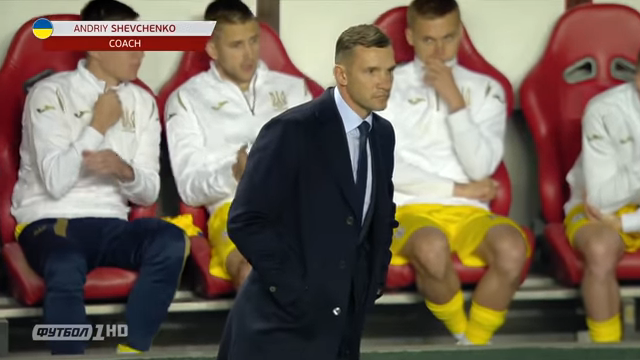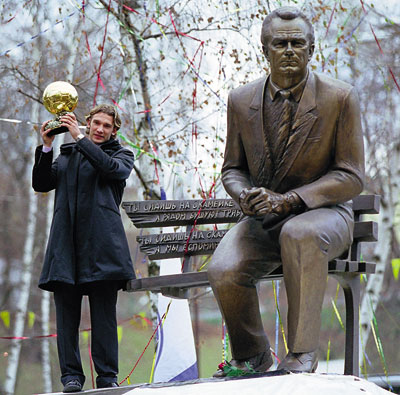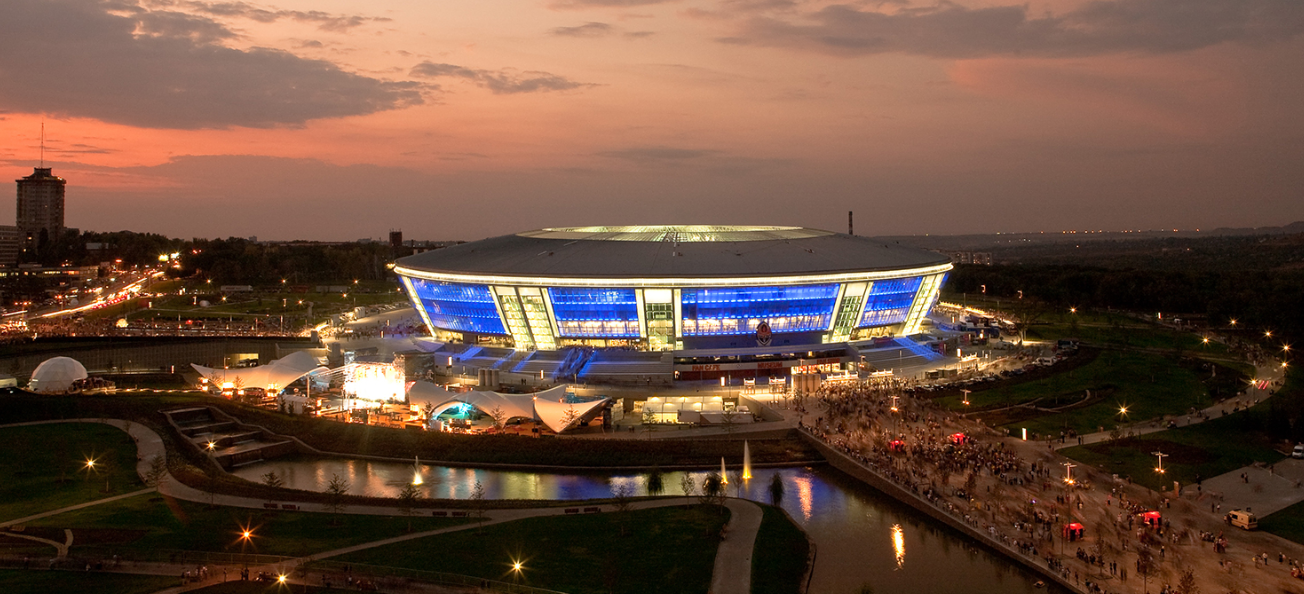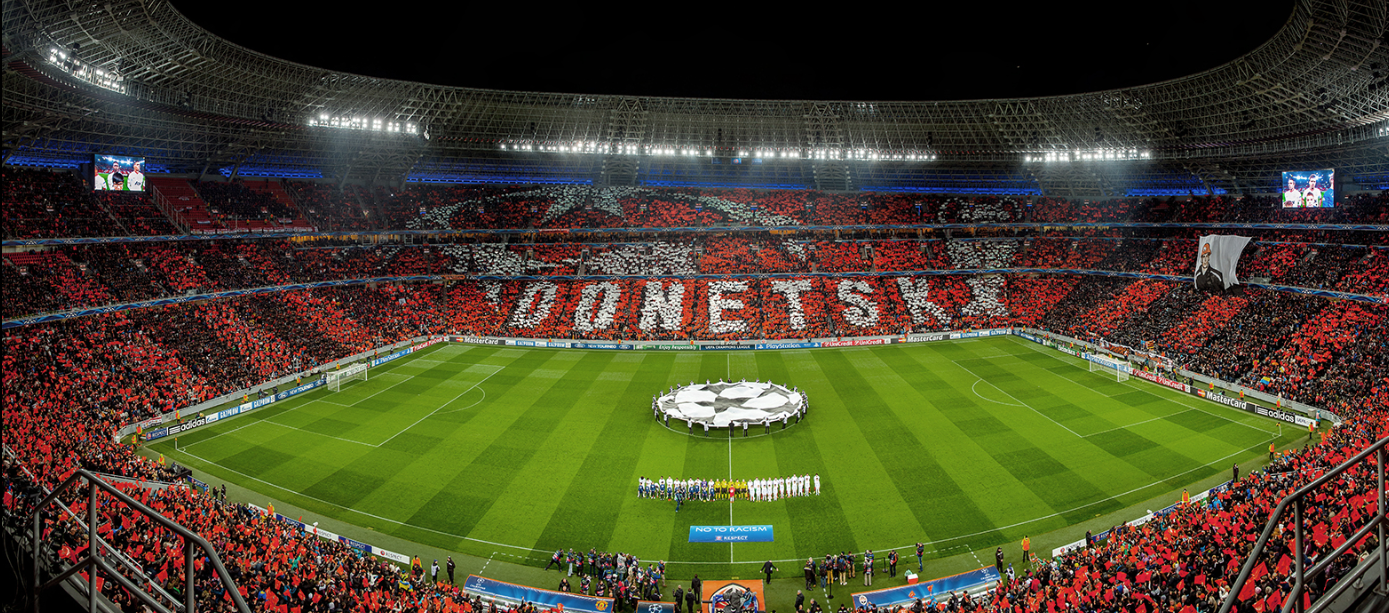These are bleak times in Ukraine… War in the east with new casualties every day, fires in the north spreading lethal radiation, Coronavirus taking its toll across the land. But even in the worst of times — in a moment of rare respite — the mind turns to what was once one of the simplest of pleasures. Football.
Dynamo Kyiv. Shakhtar Donetsk. Karpaty Lviv. Chornomorets Odesa. These major league teams belong to the Ukrainian Premier League, formed in 1991 in the wake of Independence. Several Ukrainian clubs have reached European club competitions, including Dynamo Kyiv, Shakhtar Donetsk and Dnipro (dissolved in 2019).
This year, Ukraine qualified for Euro 2020, which was scheduled to take place in 12 cities across Europe, from 12 June to 12 July 2020. Unfortunately, due to the COVID-19 crisis, the competition has been delayed to 2021.
To say it is an extraordinary achievement that Ukraine qualified for the Euros would be an understatement. All of the odds were stacked against the country, with the greatest being a “hot war” fighting Russia-backed militants in the eastern region of Donbas.

Flashback 28 August 2009. I’m visiting family and friends in Donetsk. It’s the day before the opening ceremonies for the Donbas Arena. As I walk up to the stadium grounds, I marvel over the opulence of the stadium, wishing I could be there for the grand opening the next day, but I’m scheduled to catch a train to Crimea in the morning. I watch the grand opening on television and see Beyoncé singing for more than 45,000 people in the stands. I’m filled with pride to see how far Ukraine has come since the collapse of the Soviet Union. I have no idea that a mere five years later, the stadium will be destroyed by a brutal war.
“I think the stadium itself is ready to host European tournament matches even today or tomorrow, it’s certainly one of the most beautiful stadiums in Europe from what I‘ve seen, and I‘ve seen a few. I think it’s really unique … very modern, and it was built from scratch, while many other stadiums have been rebuilt or refurbished. But here it’s new, it has its own, I would say, soul and its own structure – it says something. I am really impressed! I didn’t expect to see this.” Gianni Infantino, FIFA President
The stadium represented the resurgence of football in Ukraine. Then, in 2014, after the Euromaidan Revolution of Dignity, Russia annexed Crimea and invaded Donbas. Russian’s goal then -- and to this day of the six-year war that has claimed 13,000 lives -- has been to quash Ukraine’s movement toward Europe and the establishment of a fully democratic state.
Donbas Arena and Donetsk International Airport -- symbols of national pride and strength
With Russia’s invasion, everything changed, almost overnight. After more than six months of intermittent bombings, the Donbas Arena was devastated and left in ruins. Still unusable to this day, the true tragedy is that the remains of the stadium are controlled by a puppet republic -- the so-called “Donetsk People’s Republic.” Not only was the stadium destroyed, more importantly, the region itself was forced into war with Russia and its proxy insurgents. When in 2017 I visited my family in Donbas near the war zone, I still had not come to terms with the reality that there was a war raging just a few kilometers away. Perhaps naively, I had always thought I would be able to return and watch a football match in the Donbas Arena, but the war had destroyed that dream. Today, the Donbas Arena remains out of operation, but even in the darkest days, a glimmer of hope may shine -- despite the ongoing war, the stadium is slowly being repaired. On 31 May 2018, the field turf was successfully restored. Perhaps there still is a chance for the dream.

Read also: In memoriam: The Defense of Donetsk Airport (25 May 2014 – 22 January 2015)
The battle for the Donetsk airport is depicted in the 2017 film Cyborgs: Heroes Never Die. The film was released in Kyiv, on 7 December 2017 -- symbolically planned for the third anniversary of the fall of the airport terminal. It has since been screened internationally and at prominent film festivals.Read also: Story of the “cyborgs”: Ukraine’s Donetsk airport defenders to hit big screen
Ukraine’s road to Euro 2020
Ukraine has only appeared in two UEFA European Championships — Euro 2012 and Euro 2016. Ukraine and Poland were selected to be co-hosts for the Euro tournament in 2012. The tournament was scheduled to take place across eight cities, equally split between Ukraine and Poland. The Euro 2012 tournament games included 16 national sides drawn into four groups, with four teams in each. The top two in each group advanced to the knockout stages. However, the Ukrainians were wiped out of the group stage in 2012 and were knocked out of the tournament early on. In the Euro 2016 lead-up, Ukraine qualified for their first Euro tournament (apart from automatic qualifications, as hosts in Euro 2012) after beating Slovenia in the play-offs. This was the first time that Ukraine qualified for a Euro tournament via the play-offs, and enough to send them to Euro 2016 to participate in the group stage. Unfortunately, they failed to register a single goal, and lost all three games in the group stage — respectively, to Germany, Northern Ireland, and Poland — thus failing to advance to the knockout rounds. Yet, under the guidance of Ukrainian-legend Andriy Shevchenko, appointed head coach in 2016, the national team reinterpreted discipline and leadership. They would never be the same. Shevchenko brought the same intensity, ball control, and attacking football that he had himself executed as a player from 1993 to 2012. He took the country’s journalists by surprise when they realized how far the team had advanced, qualifying for Euro 2020.
A brief history of football in Ukraine
After the collapse of the Soviet Union in 1991, many major Ukrainian teams, including Dynamo Kyiv, had found it difficult to keep their best players in the country. Many chose to go elsewhere to secure a better life for themselves and their families. Under the Soviet Union, funding came directly from the centralized government to operate. Now, clubs needed to operate like a business and find different ways to stay afloat. Meanwhile, Ukrainian business in general was not in a good position to fund clubs. Sponsorships were rare, and maintaining infrastructure — let alone payroll — was a major challenge. In the last years, many clubs have either incurred heavy debt, gone bankrupt, or suffered total financial collapse, as did Football Club (FC) Metalist Kharkiv in 2016 and FC Dnipro in 2019. Many of Ukraine’s current stadiums date back to the 1950s and 1960s. They were once the pride of the country, but at present show little hope for the future. Smaller football teams are also suffering, they are not able to fund youth development programs, hire scouts, or buy foreign players -- all of which were once commonplace. These clubs are left far behind the powerhouses of Dynamo Kyiv and Shakhtar Donetsk who are struggling in European competitions themselves.


Read the second part of the article: Ukraine's once glorious football may yet rebound with Euro-2020
Read also:
- Ukrainian artist creates alternative promo for World Cup-2018 in Russia
- West must boycott FIFA World Cup or face an even more dangerous Putin afterwards (2018)
- Western leaders should not allow the World Cup to become Putin’s tribune – MEP Harms (2018)
- 60 MEPs call on the EU to boycott FIFA-2018 over Russian wars, Ukrainian political prisoners (2018)
- Russian proxy “republic” sentences two pro-Ukrainian football fans to 13 & 17 years (2017)
- Spain’s most popular newspaper supports Ukrainian footballer Zozulya: A lesson in patriotism (2017)
- Russian football louts in Marseilles part of Putin’s ‘hybrid war’ against the West (2016)
- Ukrainian soccer fans accuse UEFA of supporting Russian aggression



